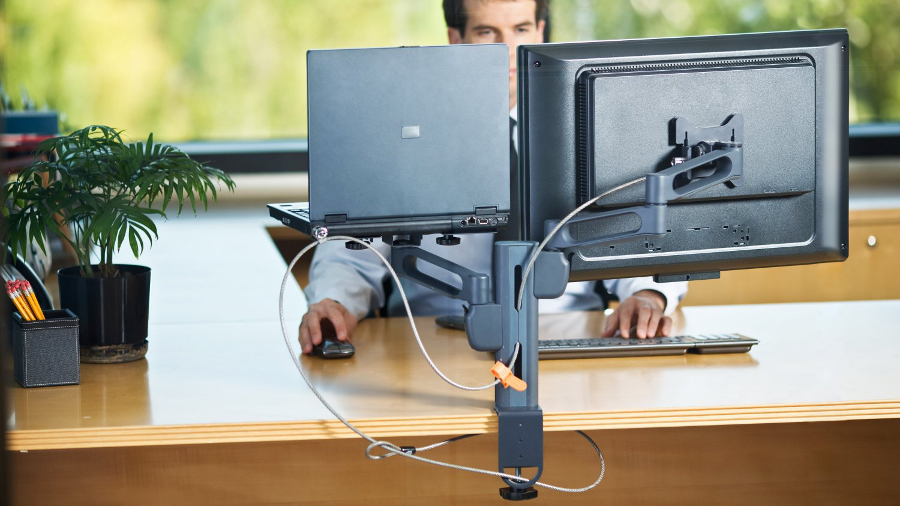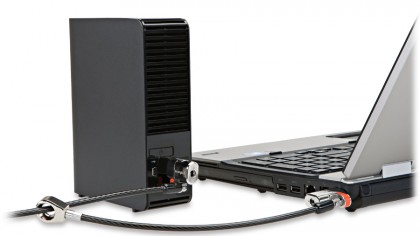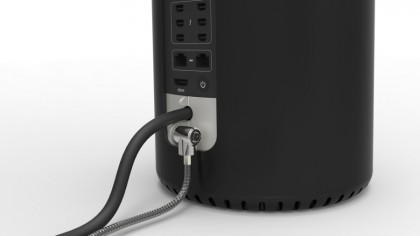How to protect your business hardware
We look at how to prevent hardware theft

According to a Freedom of Information request made by ViaSat, over 180,000 digital devices were reported to the police as lost or stolen last year. Last year also saw Glasgow City Council fined £150,000 (around US$250,000, AU$270,000) for losing 74 unencrypted laptops that contained the bank details of 6,000 people.
With more sensitive information now being stored on portable digital devices, it is essential that all possible measures are always taken to protect them from theft.
"How an organisation can fail to notice that 74 unencrypted laptops have gone missing beggars belief," said Ken Macdonald, the ICO assistant commissioner for Scotland. "The fact that these laptops have never been recovered, and no record was made of the information stored on them, means that we will probably never know the true extent of this breach, or how many people's details have been compromised."
What's more, your business also has a responsibility to protect the data stored on these devices, as part of the Data Protection Act, which states:
"Where the information held on a laptop or other portable device could be used to cause an individual damage or distress, in particular where it contains financial or medical information, they should be encrypted."
Protect and find
Taking care of data protection is of course only one part of a robust IT protection policy. Clearly, for any business, the loss of sensitive data is a major concern. The good news is that your enterprise isn't powerless to act. There are a number of ways that all of today's digital technologies can be protected from theft:
• Visible deterrents
Sign up to the TechRadar Pro newsletter to get all the top news, opinion, features and guidance your business needs to succeed!
Often a simple warning that the device is traceable is all that is needed to prevent a theft. One method is to use a tamperproof sticker linking the serial number of the device to a database. Immobilise offers a cost effective method to protect any kind of IT equipment from theft.

• Invisible deterrents
Physical tags are all well and good, but what if you could secretly protect your digital devices without any outward sign? It has been possible for several years to forensically tag any devices with a special liquid. Companies including Retainaguard and SmartWater offer an ingenious way to invisibly tag objects with unique codes.

• Physical protection
There are a number of solutions on the market that can offer a level of physical protection. It must be remembered, however, that they are a deterrent and not a guarantee of avoiding theft. One of the best known is the Kensington Lock which offers a method of tethering your notebook PC to a desk or other secure object. Secure cases are also available for tablet PCs.
If you have a MacBook with Retina display, you can't use standard locks, as these notebook are too slim. The solution is to use a secure case such as the one from Maclocks.
Non-Apple users could consider STOP-Lock to protect their notebook PC.

Users of the Mac Mini can also physically protect their computer by encasing it in a robust enclosure that is tethered to a desk. And if you are lucky enough to own a Mac Pro, this too can be protected by adding a bracket to the machine that enables it to be secured to a desktop.
While a great deal of today's digital equipment is used outside of the relative security of an office environment, it is still possible to protect your business' devices. Trust has an alarm system that can be attached to most digital devices, as can the Kensington Proximo. And ChargerLeash offers a charging cable with a built in alarm.
Choose your weapons
As there are a great number of different security and theft prevention devices available, which one(s) should you choose? Ask yourself these questions to decide on the perfect anti-theft devices to protect your business' digital assets:
• Will all the devices only be used within an office space?
If so, physically tethering the devices to desks or other immovable objects will be efficient and cost effective using solutions like Kensington Locks.
• Do you need to protect smartphones and tablet PCs?
If so, using a protective case that has anti-theft hardware built into it will be the most effective option.
• Are any of the devices used outside of a secure office environment?
If so, visible deterrent stickers can be effective. Also, match a physical protection system to the specific device for added safety.
• Will the devices be used in any insecure locations?
If so, attaching an alarm to the device will instantly notify the user that their device has been moved.
Multi-layered defence
Often, using a number of security systems together will deliver the best solution. SmartWater is a good example here. A notebook PC could be tethered to a desk, but if stolen, the SmartWater tag would still be able to identify the device it was used with, and who stole the machine.
Ultimately the level of threat that your company perceives will determine the precautions your business takes to prevent the theft of digital hardware. As much business is now done on the move, protecting all the devices in use is a must not only for commercial reasons, but also to fully comply with legal requirements regarding the protection of data.